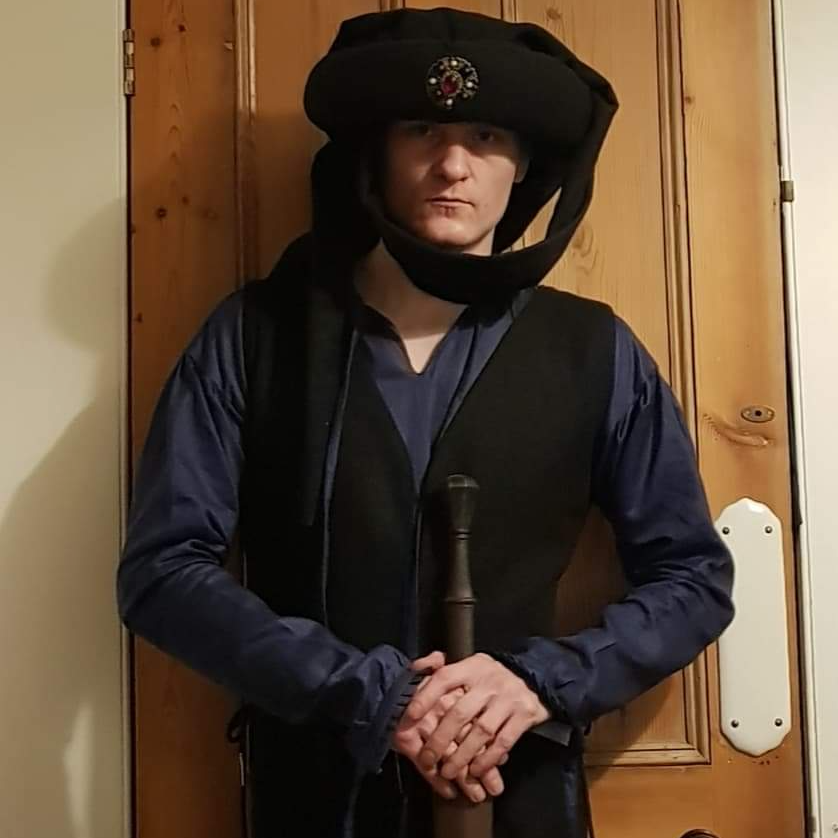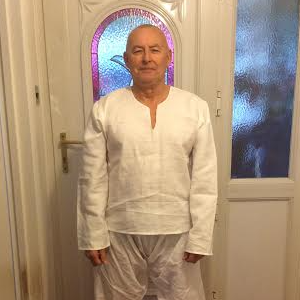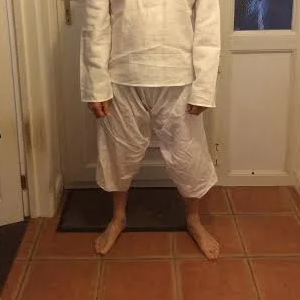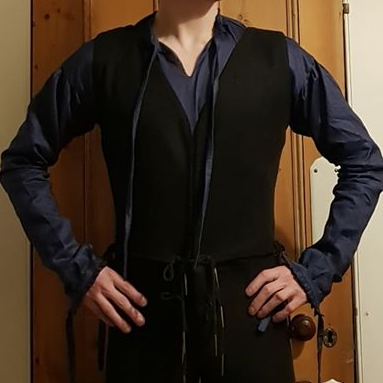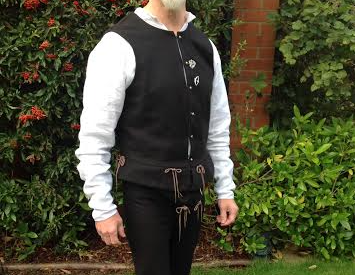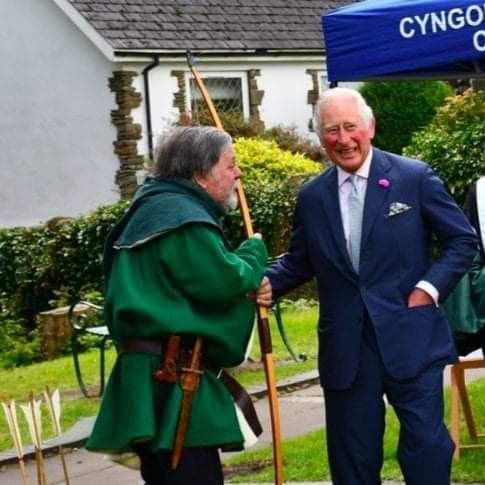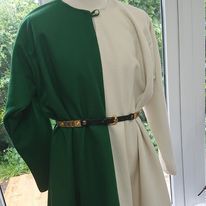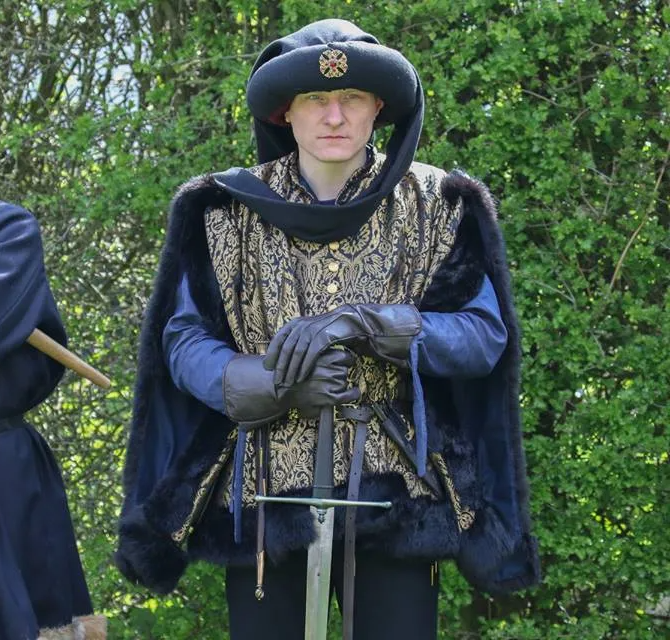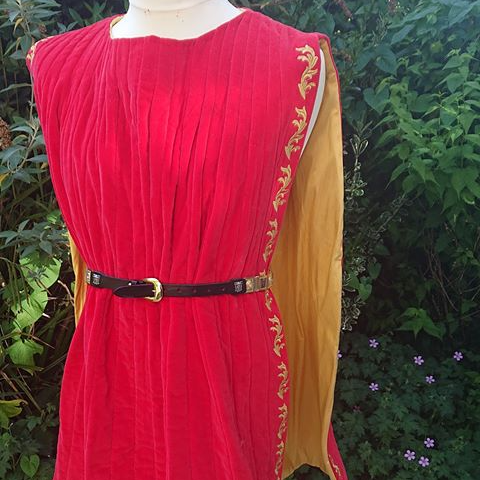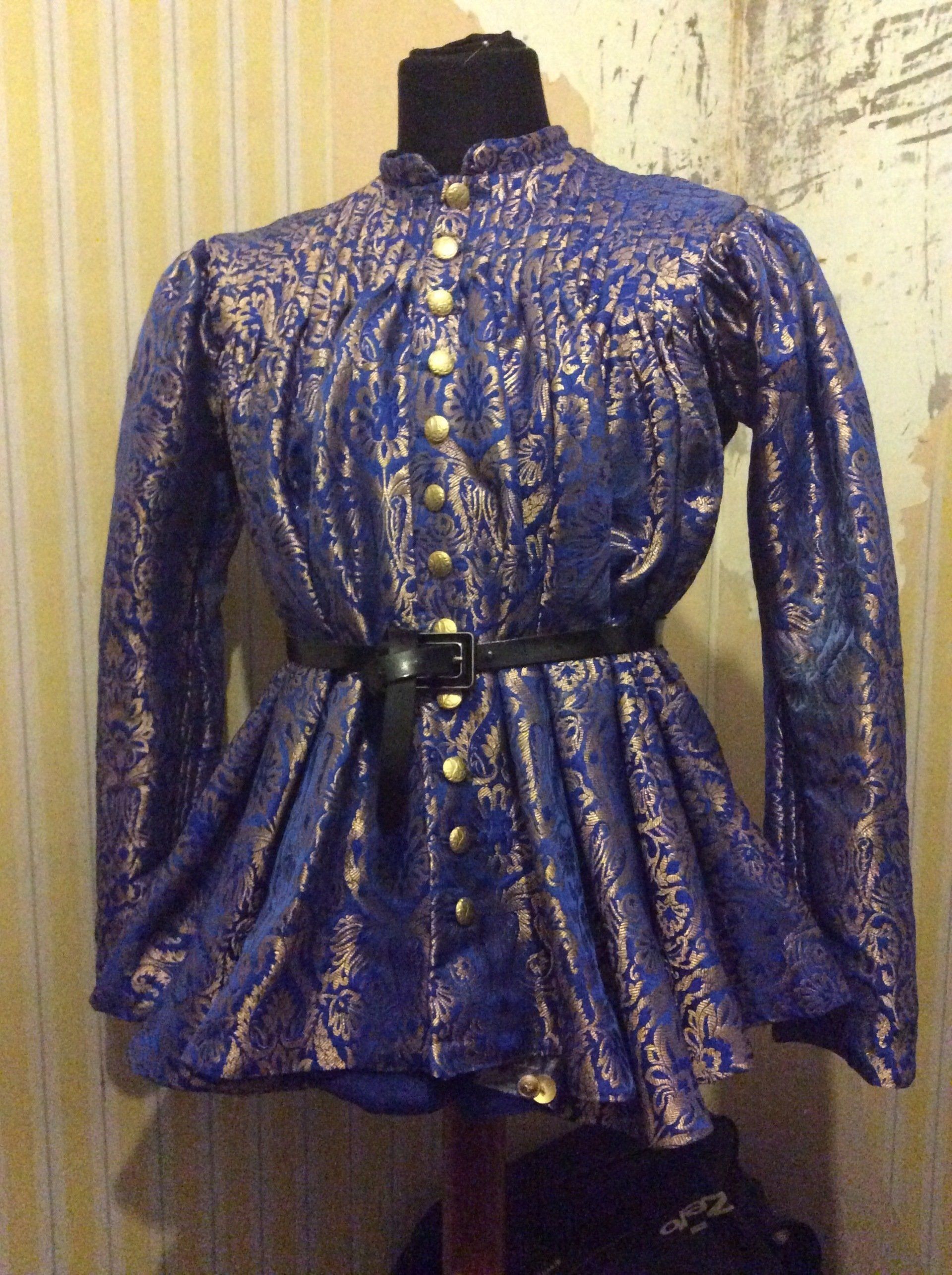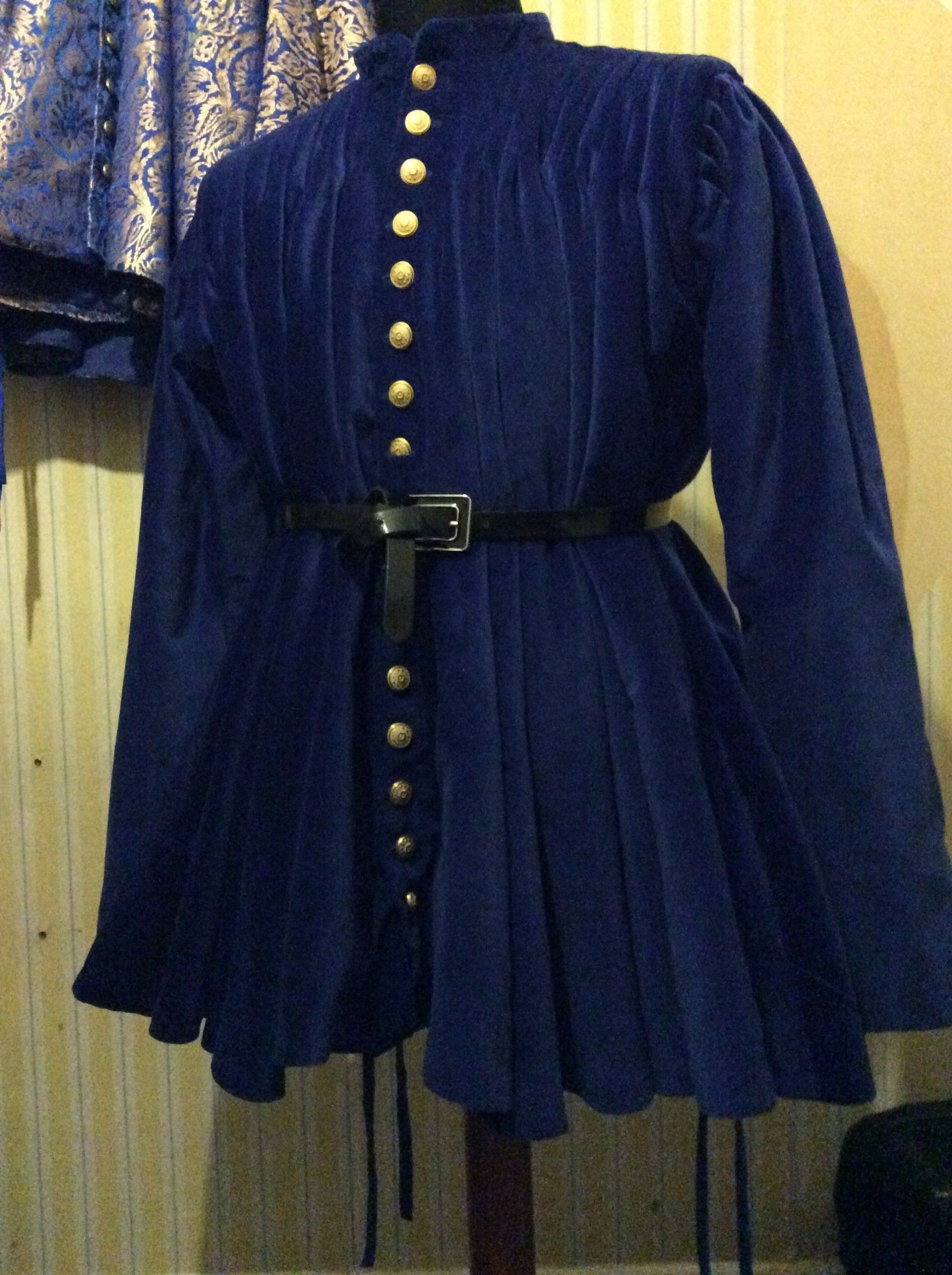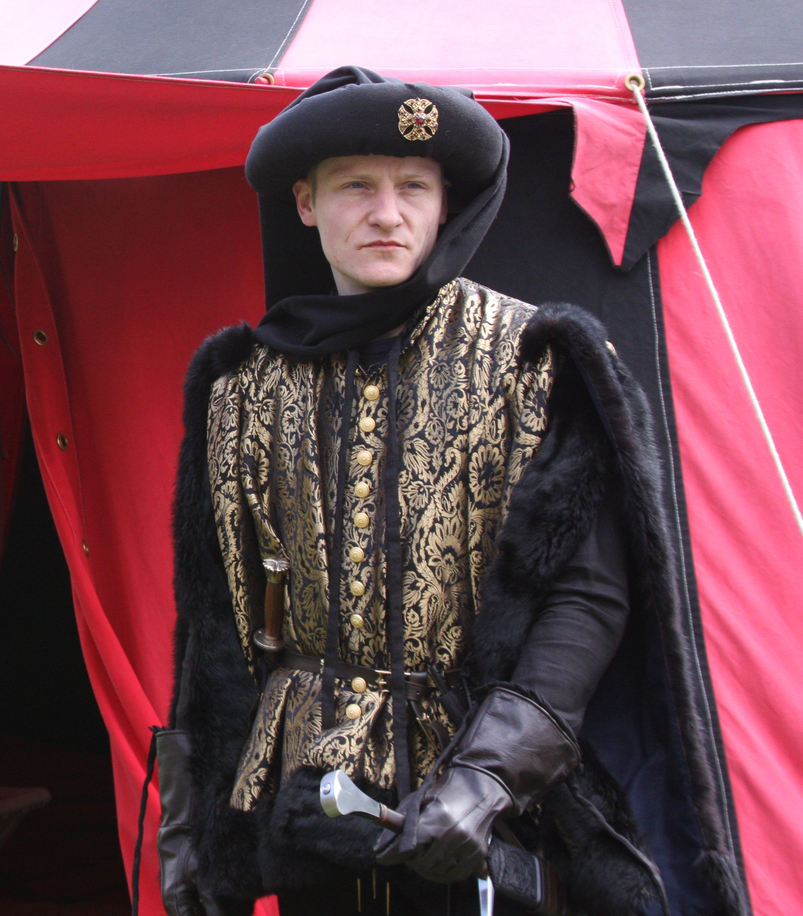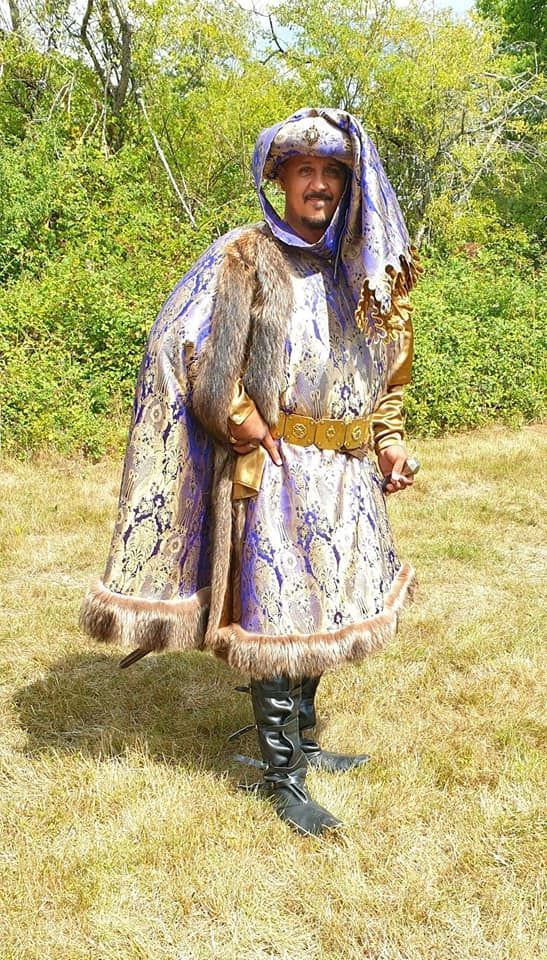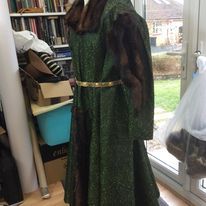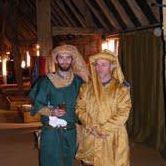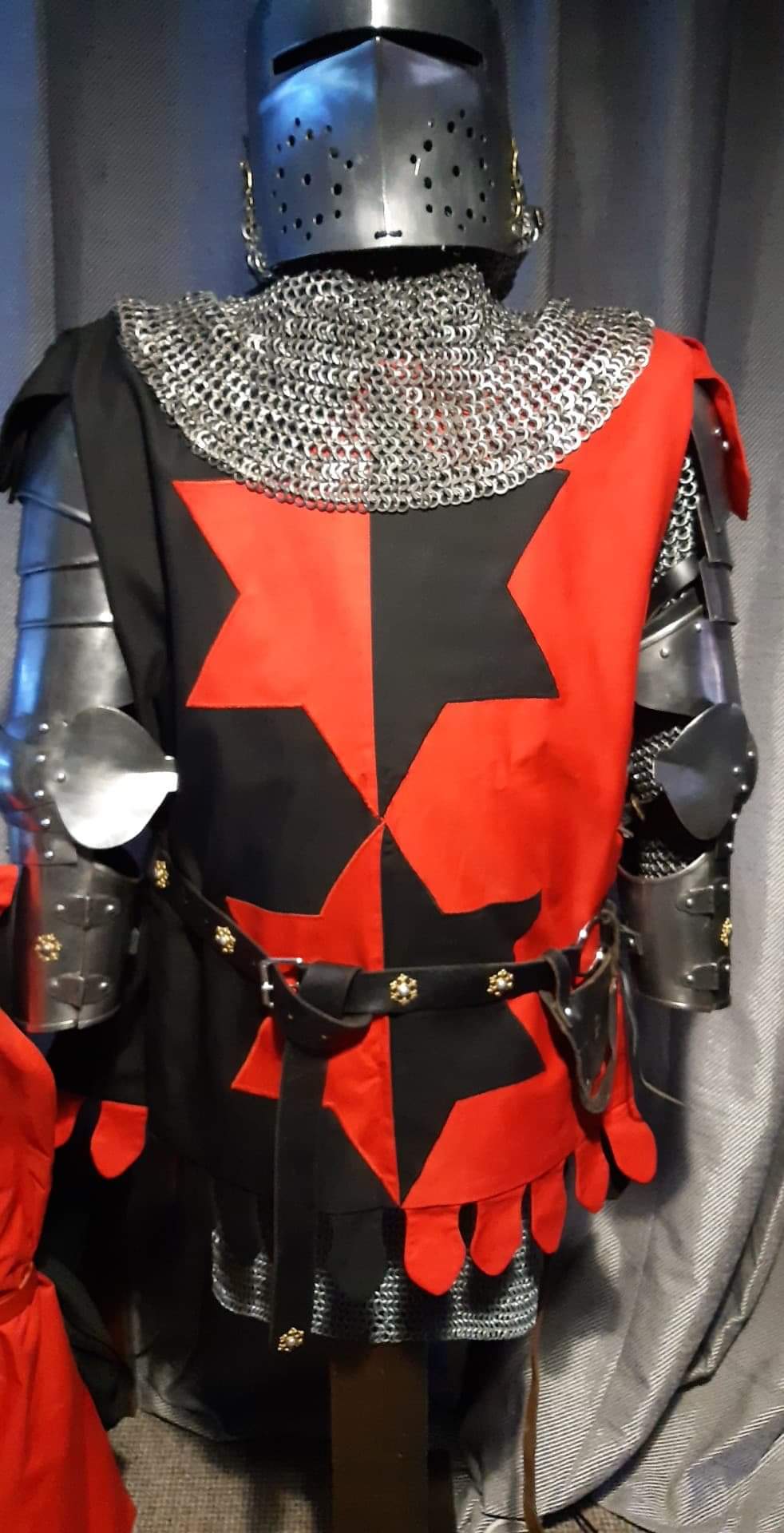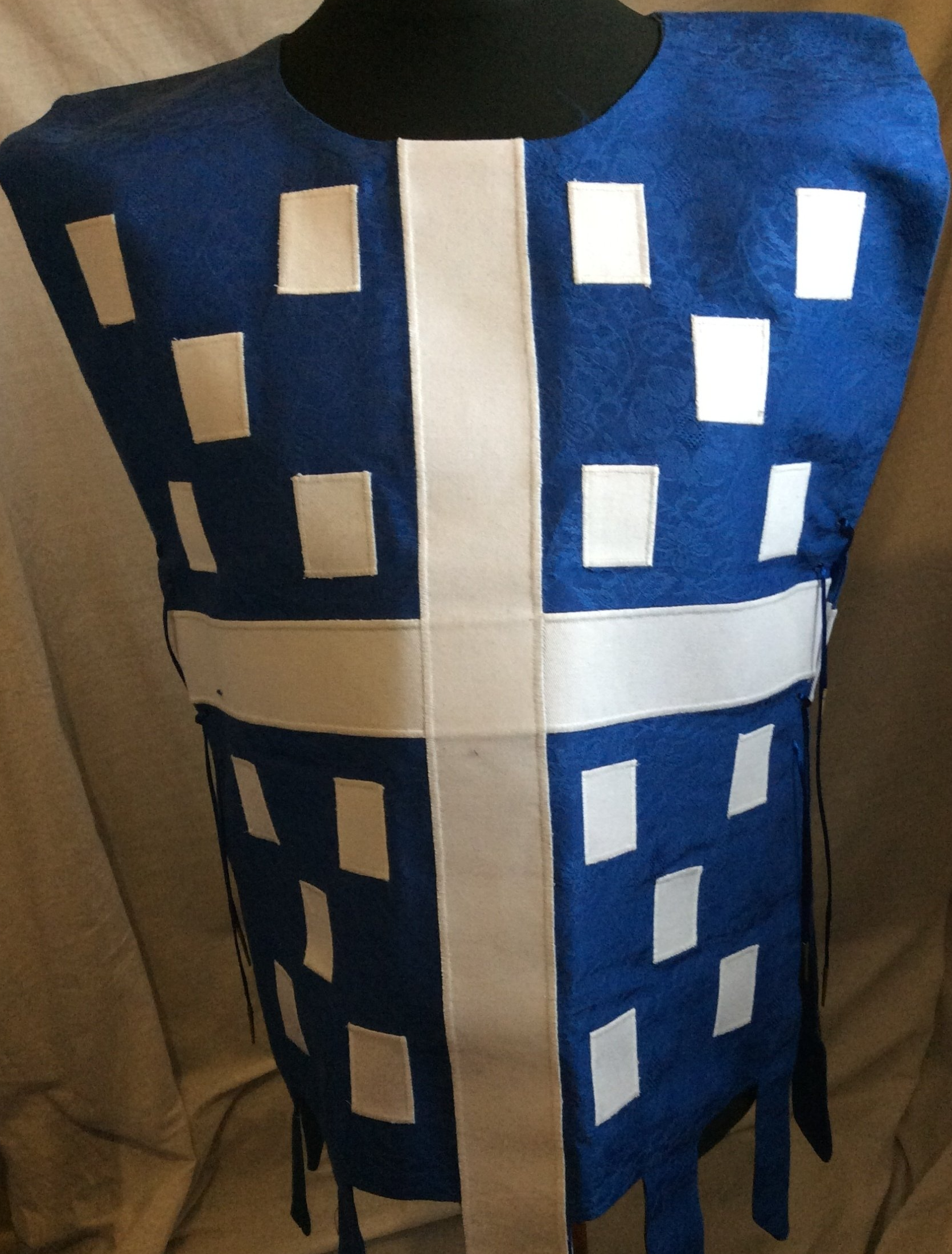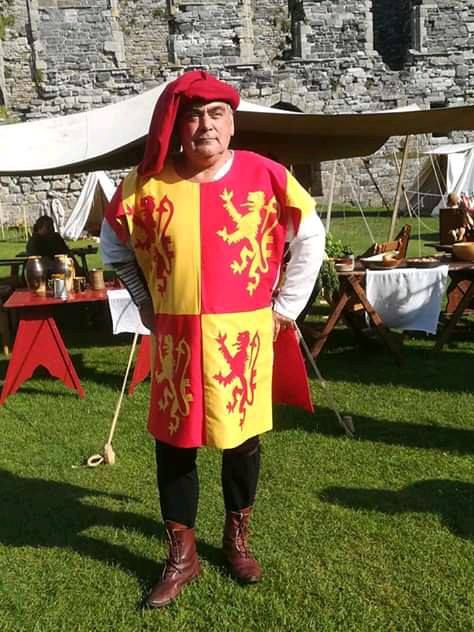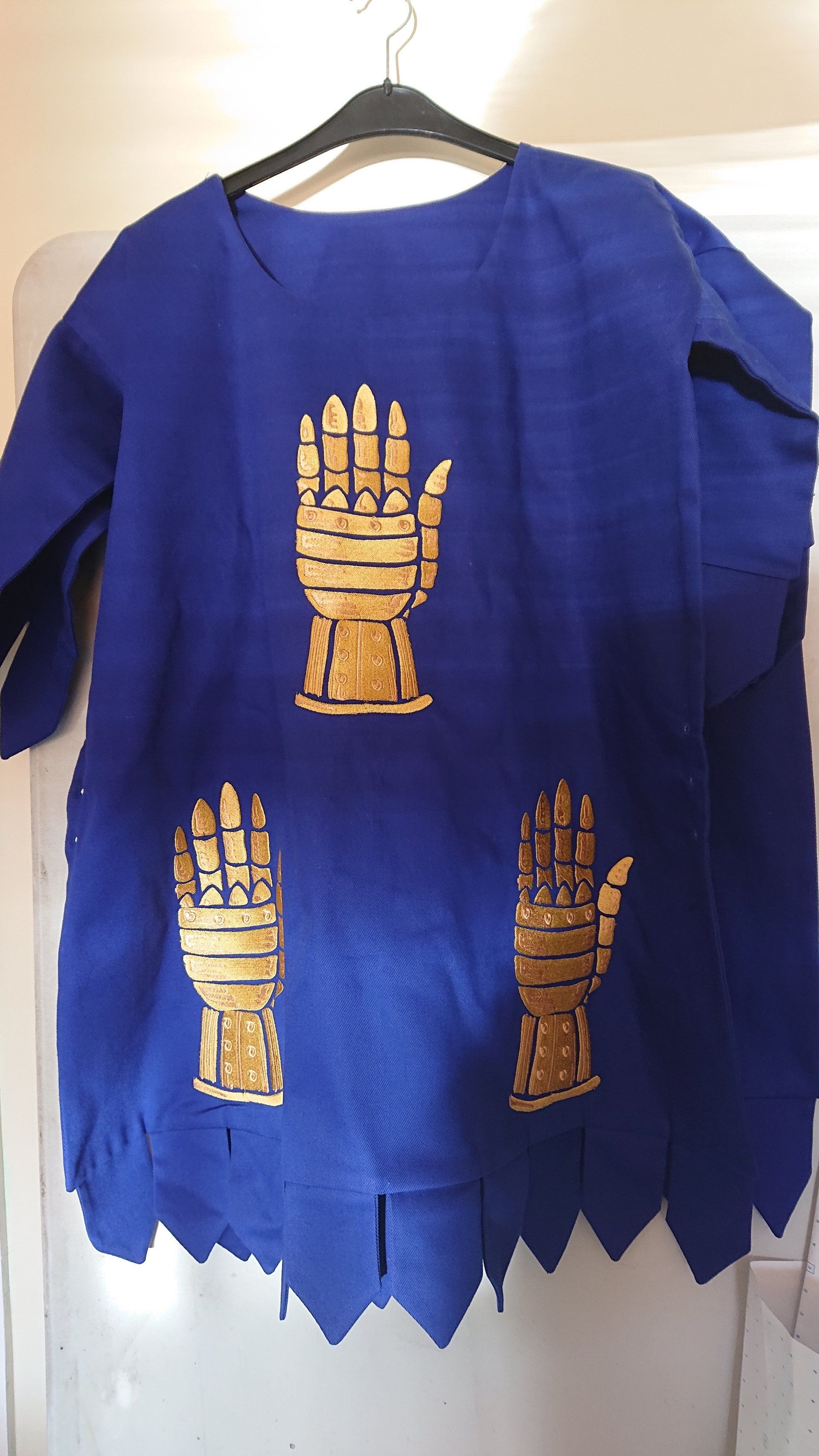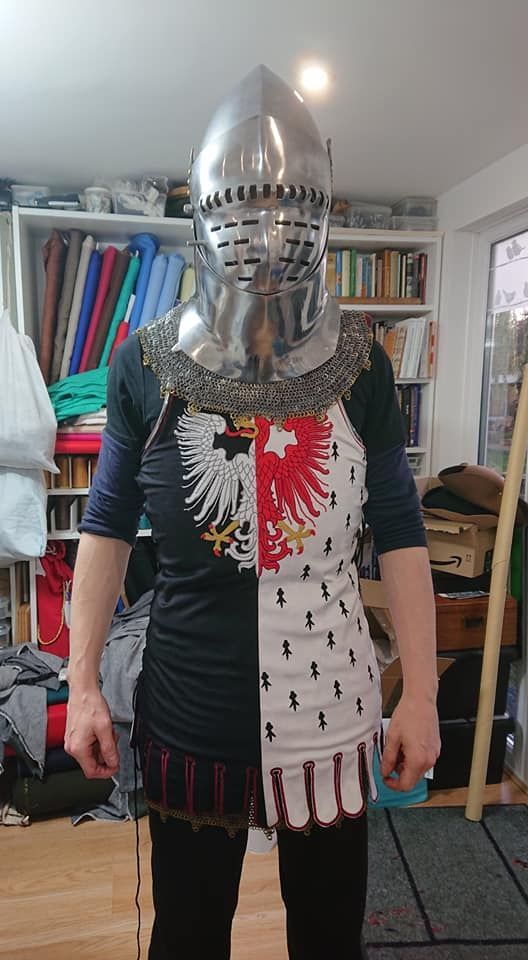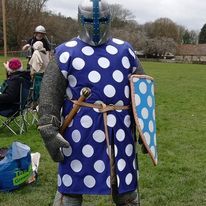

Men's Clothing
14th Century Fashion
The 14th century was the start of many changes in garments as well as Armor. Men’s clothing was accelerating from clothing for comfort to becoming a way to show off.
In the middle of the 14th century Edward III was trying to protect the English market, so had different fashions to the continent. In the later 14th century he brought in sumptuary laws not only to distinguish between classes but also to keep the taxes in England. Unfortunately they were difficult to enforce and only lasted 3 years.
15th Century Fashion
As with the 14th century there are many changes in the shape and styles of men's clothing.
The century started with the most fashionable statements being excessive of fabric across the chest, making the waist seam even smaller. Also having tighter trousers, showing off shapely calf muscles and a very large cod piece to show of your "manliness", as exampled by Henry the VIII
Mens Clothing: 14th - 15th Century Fashions
Shirts
12th - 15th Century Undershirt
This was a simple garment, normally in white linen, long sleeve, round neck. Ties were added in from the 15th century.
This was warn like a vest during the day and a nightshirt during the night as normally when sleeping a night shirt or nothing was the worn. they then changed into a clean one in the morning.
Hose
13th - late 15th century Trousers
Hose started as all in one lose garment similar to trousers in the 13th century. These then changed to a tight on the body garment which came as separate legs. These were normally in wool, sometimes with the foot covering attached. Sometimes the foot covering (like socks) was a separate piece of cloth fitted over the foot and up the leg, held up by a garter around the calf. As the doublets get shorter the hose started to be joined at the back and by late 14th century they were joined at the front with a small codpiece attached.
The single leg hose were attached to the braise (underwear) by ties. The joined hose were attached instead to a pourpoint (waistcoat).
Per Point
late 14th - early 15th century waistcoat
There is a lot of discussion on the specifics of this garment.
It was similar to a waistcoat have been noted in pictures with eyelets around the bottom, with cords attaching them to your single hose to keep them in place. They were often made of wool.
Tunic
12th - 15th century Shirt
These were normally made in linen or wool and in colours other then white. Similar shaping to the undershirts but with tight fitted sleeves, and round neckline. with a slit opening in the 14th century leading on to tied ones in the 15th century.
These were normally warn with a leather belt, and other belt accessories.
For the wealthy people although the shape would have been similar the fabric would have been silk or brocade. By the middle of the 14th century buttons were a way of showing of your wealth, so having lots of buttons down the lower half of the sleeve was very popular.
Surcote / Cotehardie
14th - 15th century Jacket
Depending on your standing this would have been made of different materials. From wool and silk to brocade, velvet and more. Some times they were lined with fur or embroidered, and embellished.
This garment had many variations. Edward lll was ordering the new short Surcoat at the same time as the longer versions were still in fashion.
At the beginning of the 14th century the surcote was long and straight. By the middle of the 14th century you can see the length has changed to just around the thig. These had fuller in the hems and were worn with a belt on the hip, made of metal or leather sometimes embellished with stones etc. By the end of the 14th century they are much fuller across the chest making the waist look smaller and were hip length, leading to a drastic change in the hose.
Fuller sleeves with a opening around the elbow allowing the buttons on the tunic to be seen also came into fashion. Dagging is also seen around the edge of garments and headwear, showing you could afford to waste fabric . The surcoats became more elaborate with fur linings, trimmings, large dangling sleeves and more.
As the surcoats became more fitted the ways of getting into them changed, with a front opening and a small stand up collar, you either placed them over the head or hidden hooks and eyes were used instead of buttons.
Tabard
Tabard was the garment used on the battlefield to show who you were or who you belong to. Also used as livery.
These over the head garments with heraldry on back and front. If it was your heraldry it would cover the whole of the cloth. If was showing you belonged to a household it would be your knights heraldry on a badge.
These garments started long both back and front. They then became shorter at the back then the front for horse riding. Next the front got shortened to match the back again. In the 15th century they became more fitted with a dagging along the bottom and were as short as your hip.
Usually made in wool or canvas and either embordered of painted.

